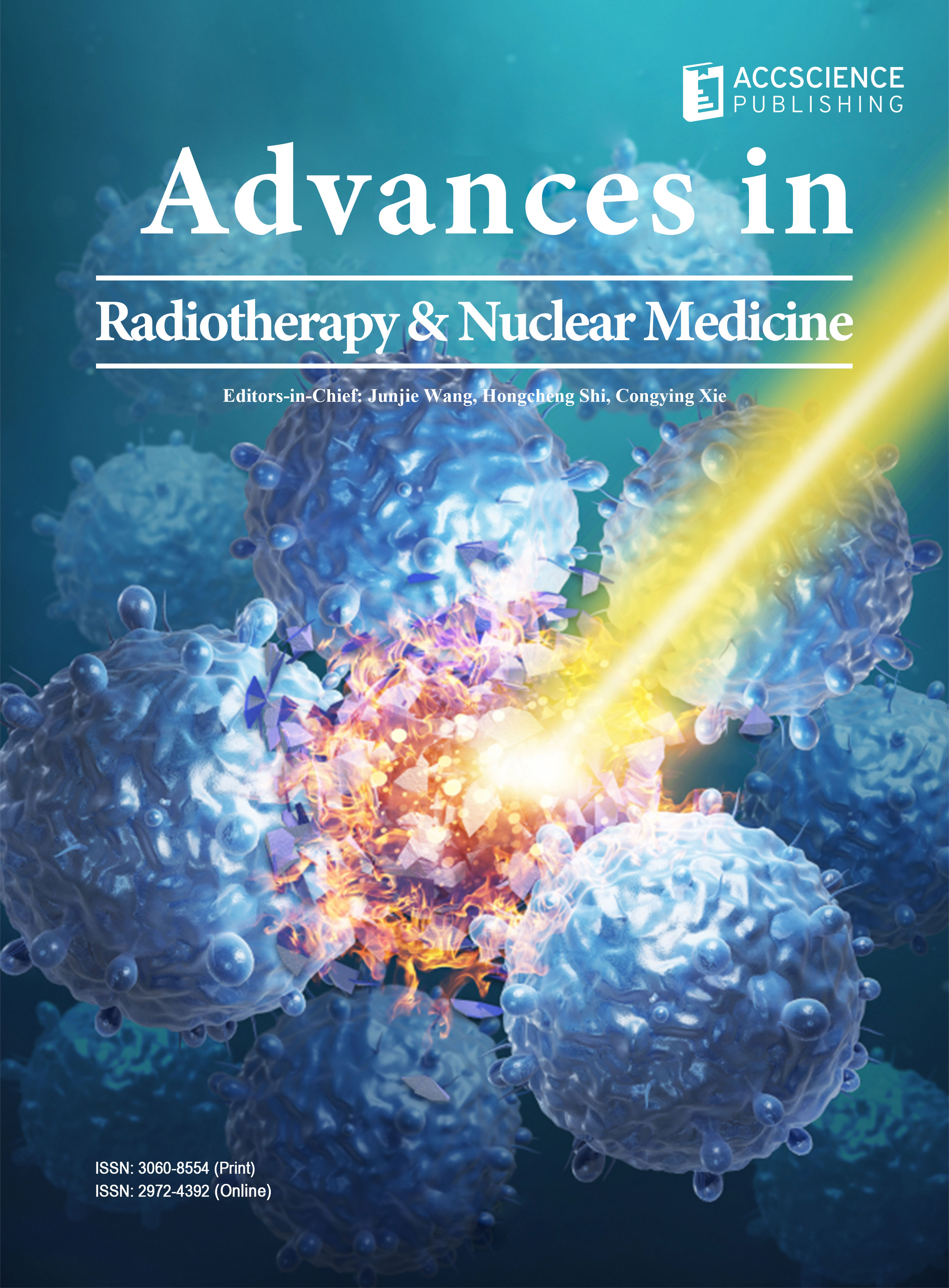Dosimetry and safety of single-channel applicators for intracavitary brachytherapy in cervical cancer

High-dose-rate intracavitary brachytherapy plays a crucial role in achieving local control in the treatment of unresectable uterine cervical cancer. In this treatment approach, the single-channel applicator (SCA) offers a simpler structure for implantation compared to the fletcher applicator set (FAS), easing the treatment planning. To evaluate the dosimetry and safety of the SCA for intracavitary brachytherapy in cervical cancer, the present study aims to assess its dose distribution in relation to the FAS. In this study, we compared the physical and dosimetric characteristics of the inferential reference points (A, cervix; B, bladder; and R, rectum) of the SCA to those obtained with tandem and FAS dosing. Dosimetric characteristics and dose distributions in a Chinese female anthropomorphic phantom were evaluated using RGD-3B thermoluminescent dosimetry. The SCA generated an oblate, pear-shaped dose distribution curve, resulting in a reduced high-dose area along the bladder-rectum axis. Compared to the tandem, the SCA resulted in dose reductions of 21% and 17% at the bladder and rectum, respectively. When compared to the FAS, the dosing with the SCA at the bladder and rectum did not show significant differences concerning the occurrence of severe toxic effects. The SCA demonstrated a dose distribution curve similar to the standard FAS but not the tandem. The results of the present study indicate that both SCA and FAS showed equally acute toxicity and resulted in late injuries to the rectum and bladder. Nevertheless, the SCA’s simpler structure, which allows for more convenient placement and planning, warrants further clinical investigations to assess its efficacy and practical application.
- Sankaranarayanan R, Ferlay J, 2013, Burden of breast and gynecological cancers in low-resource countries. In: Breast and Gynecological Cancers. New York: Springer, p1–17.
- Jemal A, Bray F, Center MM, et al., 2011, Global cancer statistics. CA Cancer J Clin, 61: 69–90. https://doi.org/10.3322/caac.20107
- Jemal A, Center MM, DeSantis C, et al., 2010, Global patterns of cancer incidence and mortality rates and trends. Cancer Epidemiol Biomarkers Prev, 19: 1893–1907. https://doi.org/10.1158/1055-9965.EPI-10-0437
- Arbyn M, Castellsague X, de Sanjose S, et al., 2011, Worldwide burden of cervical cancer in 2008. Ann Oncol, 22: 2675–2686. https://doi.org/10.1093/annonc/mdr015
- Forouzanfar MH, Foreman KJ, Delossantos AM, et al., 2011, Breast and cervical cancer in 187 countries between 1980 and 2010: A systematic analysis. Lancet, 378: 1461–1484. https://doi.org/10.1016/S0140-6736(11)61351-2
- Basu B, Basu S, Chakraborti B, et al., 2012, A comparison of dose distribution from Manchester-style and Fletcher-style intracavitary brachytherapy applicator systems in cervical cancer. J Contemp Brachytherapy, 4: 213–218. https://doi.org/10.5114/jcb.2012.32555
- Narayan K, Barkati M, van Dyk S, et al., 2010, Image-guided brachytherapy for cervix cancer: From Manchester to Melbourne. Expert Rev Anticancer Ther, 10: 41–46. https://doi.org/10.1586/era.09.166
- Wakatsuki M, Ohno T, Yoshida D, et al., 2011, Intracavitary combined with CT-guided interstitial brachytherapy for locally advanced uterine cervical cancer: Introduction of the technique and a case presentation. J Radiat Res, 52: 54–58. https://doi.org/10.1269/jrr.10091
- Giorda G, Boz G, Gadducci A, et al., 2011, Multimodality approach in extra cervical locally advanced cervical cancer: Chemoradiation, surgery and intra-operative radiation therapy: A phase II trial. Eur J Surg Oncol, 37: 442–447. https://doi.org/10.1016/j.ejso.2011.02.011
- Rob L, Skapa P, Robova H, 2011, Fertility-sparing surgery in patients with cervical cancer. Lancet Oncol, 12: 192–200. https://doi.org/10.1016/S1470-2045(10)70084-X
- James ND, Hussain SA, Hall E, et al., 2012, Radiotherapy with or without chemotherapy in muscle-invasive bladder cancer. N Engl J Med, 366: 1477–1488. https://doi.org/10.1056/nejmoa1106106
- Mourya A, Aggarwal LM, Choudhary S, 2021, Evolution of brachytherapy applicators for the treatment of cervical cancer. J Med Phys, 46: 231–243. https://doi.org/10.4103/jmp.jmp_62_21
- Mahantshetty U, Tiwana MS, Jamema S, et al., 2011, Additional rectal and sigmoid mucosal points and doses in high dose rate intracavitary brachytherapy for carcinoma cervix: A dosimetric study. J Cancer Res Ther, 7: 298–303. https://doi.org/10.4103/0973-1482.87027
- Goyal MK, Kehwar TS, Manjhi J, et al., 2016, Dosimetric evaluation of tandem-based cervical high-dose-rate brachytherapy treatment planning using American Brachytherapy Society 2011 recommendations. J Radiother Pract, 15: 283–289. https://doi.org/10.1017/S1460396916000133
- Jahan D, Ahmad S, Thompson S, et al., 2023, Dosimetric evaluation of the feasibility of utilizing a reduced number of interstitial needles in combined intracavitary and interstitial brachytherapy for cervical cancer. J Appl Clin Med Phys, 24: e13833. https://doi.org/10.1002/acm2.13833
- Hoskin PJ, Cook M, Bouscale D, et al., 1996, Changes in applicator position with fractionated high dose rate gynaecological brachytherapy. Radiother Oncol, 40: 59–62. https://doi.org/10.1016/0167-8140(96)01746-x
- Datta NR, Kumar S, Das KJ, et al., 2001, Variations of intracavitary applicator geometry during multiple HDR brachytherapy insertions in carcinoma cervix and its influence on reporting as per ICRU report 38. Radiother Oncol, 60: 15–24. https://doi.org/10.1016/s0167-8140(01)00352-8
- Garipaǧaoǧlu M, Tuncȩl N, Köseoǧlu FG, et al., 2004, Geometric and dosimetric variations of ICRU bladder and rectum reference points in vaginal cuff brachytherapy using ovoids. Int J Radiat Oncol Biol Phys, 58: 1607–1615. https://doi.org/10.1016/j.ijrobp.2003.11.039
- Garipağaoğlu M, Tunçel N, Dalmaz MG, et al., 2006, Changes in applicator positions and dose distribution between high dose rate brachytherapy fractions in cervix carcinoma patients receiving definitive radiotherapy. Br J Radiol, 79: 504–509. https://doi.org/10.1259/bjr/33762931
- Wiebe E, Surry K, Derrah L, et al., 2011, Pain and symptom assessment during multiple fractions of gynecologic high-dose-rate brachytherapy. Brachytherapy, 10: 352–356. https://doi.org/10.1016/j.brachy.2011.04.001
- Waldenström AC, Olsson C, Wilderäng U, et al., 2011, Pain and mean absorbed dose to the pubic bone after radiotherapy among gynecological cancer survivors. Int J Radiat Oncol Biol Phys, 80: 1171–1180. https://doi.org/10.1016/j.ijrobp.2010.04.007
- Bhanabhai H, Samant R, Grenier L, et al., 2013, Pain assessment during conscious sedation for cervical cancer high-dose-rate brachytherapy. Curr Oncol, 20: e307–e310. https://doi.org/10.3747/co.20.1404
- Cepni K, Gul S, Cepni I, et al., 2011, Randomized trial of oral misoprostol treatment for cervical ripening before tandem application in cervix cancer. Int J Radiat Oncol Biol Phys, 81: 778–781. https://doi.org/10.1016/j.ijrobp.2010.06.051

